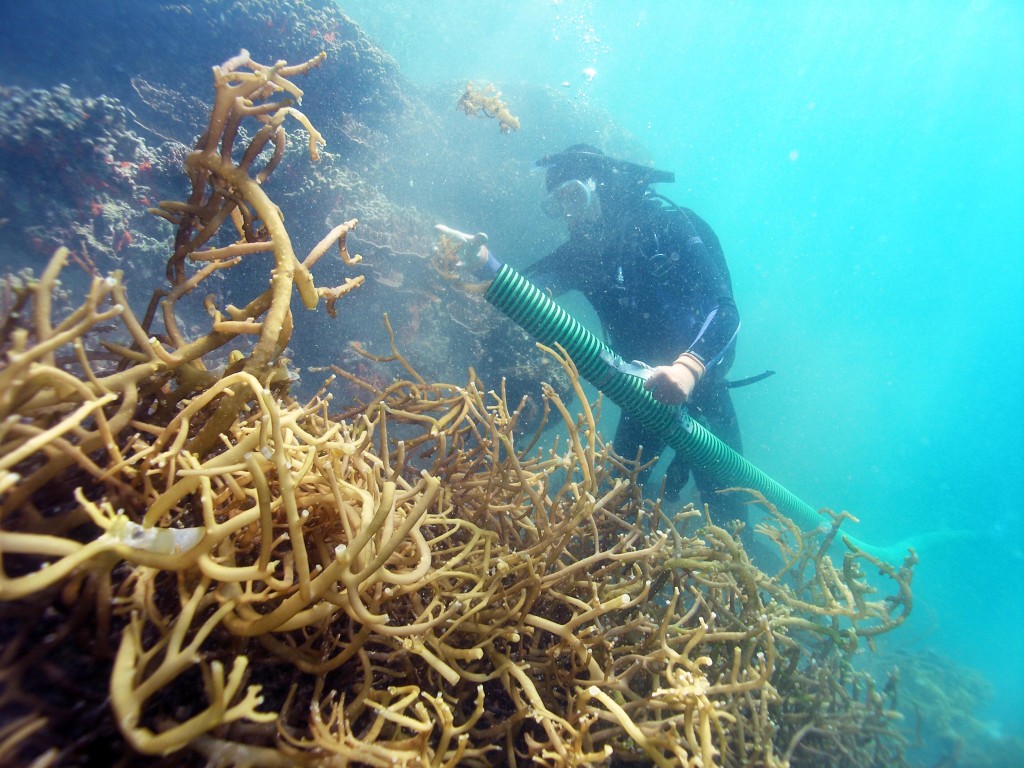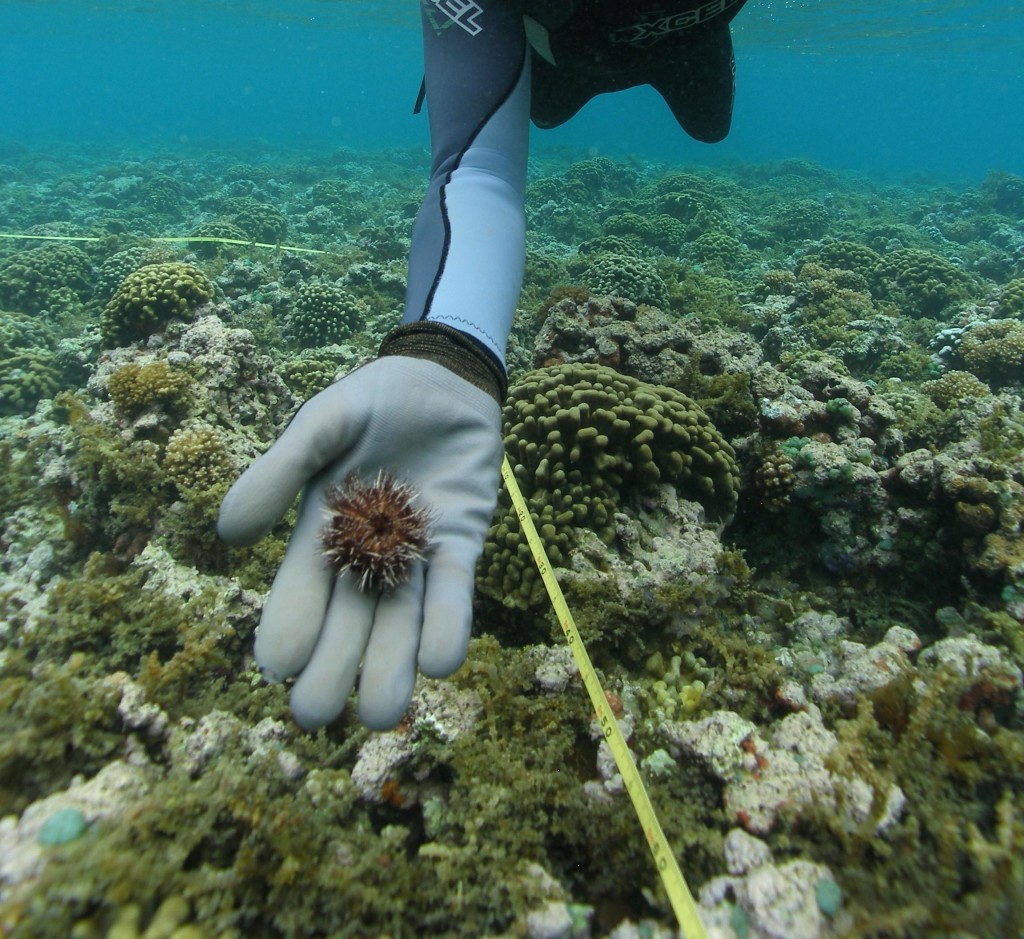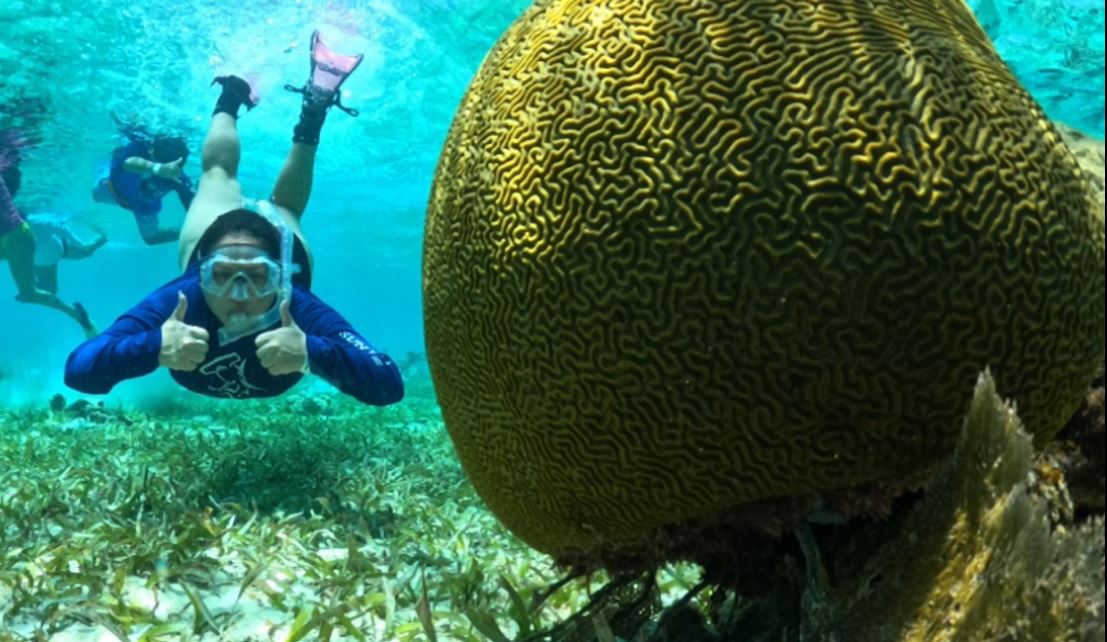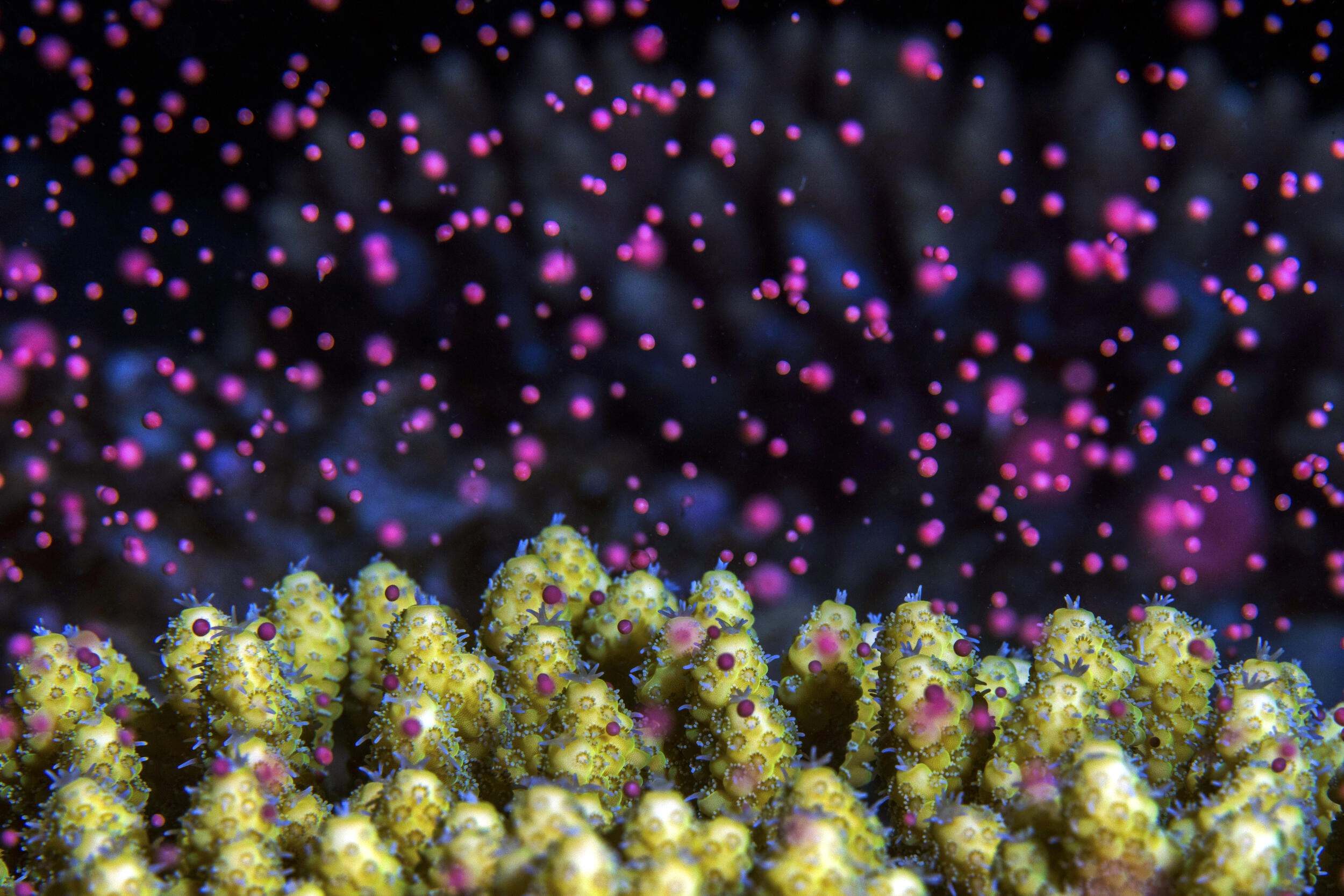Building Reef Resilience Through Invasive Algae Removal and Urchin Biocontrol in Kāne‘ohe Bay
Location
Kāne‘ohe Bay, O‘ahu, Hawai‘i
The challenge
Kāne‘ohe Bay lies below the dramatic Ko‘olau mountain range on the windward side of O‘ahu. It is the largest sheltered body of water in the main Hawai‘ian Islands, and is surrounded by numerous freshwater streams and wetlands. It is the only bay in Hawai‘i that includes fringing reefs, patch reefs, and barrier reefs. It has significant cultural and ecological value, and has long been a rich resource for commercial, recreational and subsistence uses. The bay has more than 40,000 people living near its shores or in the mountains above it, as well as a U.S. Marine Corps Base, the University of Hawai‘i Institute of Marine Biology on Moku o Lo‘e (Coconut Island), and a public pier that provides daily access to hundreds of tourists and fishermen.
Invasive alien algae are a significant threat to Hawai‘i’s nearshore coral reef ecosystems. In ocean ecosystems that are already threatened by land-based pollution and overfishing, they can easily take over and smother reefs to death. Unfortunately, the reefs in Kāne‘ohe Bay are suffering from an overgrowth of invasive algae that forms thick, tangled mats. Gracilaria salicornia (gorilla ogo) and Kappaphycus/Eucheuma spp. (smothering seaweed) were introduced to the bay for aquaculture purposes in the early 1970s. These fast growing algae have now spread throughout the entire bay where they outcompete native seaweeds, smothering and killing coral reefs, covering up native fish habitat, preventing new corals from attaching to the reef, and reducing the overall health and biodiversity of the entire bay. Fortunately, native sea urchins (Tripneustes gratilla) like to eat it, but their populations are depleted in the bay.
If nothing is done to stop the spread of invasive algae, it will continue to move northward, spreading from the bay to reefs along the rest of O‘ahu’s shoreline.
Actions taken
To restore Kāne‘ohe Bay coral reefs and prevent the further spread of invasive algae, the State of Hawai‘i’s Division of Aquatic Resources (DAR), in partnership with The Nature Conservancy (TNC) and the University of Hawai‘i (UH), embarked on a dual-phased restoration project to control the invasive algae by:
- Removing invasive algae to allow coral reefs and native fish habitat to thrive
- Restocking the reefs with native sea urchins that eat the invasive algae and keep it from growing back
Invasive Algae Removal
DAR, TNC, and UH developed the first Super Sucker barge in 2005 to “suck up” invasive algae. The Super Sucker is a suction pump on a barge with hoses that are used by divers to vacuum the invasive algae off the reefs. The invasive algae are then delivered to local farmers who use it for compost.
The Super Sucker is capable of removing anywhere from 600-1,000 pounds (270-450 kilograms) of algae per hour depending on location and conditions. Last year, TNC built a second Super Sucker and a mini Sucker to be used in shallower water, to help speed up the operation.
Native Sea Urchin Biocontrol
Although the Super Sucker is effective at removing the bulk of the invasive algae, the algae can return within six months if nothing is done to stop it. In order to prevent the algae from growing back, DAR operates a sea urchin hatchery at their Anuenue Fisheries Research Center. These native “collector urchins” were once plentiful in Kāne‘ohe Bay, but their populations have declined over the last few decades.
The state has successfully reared T. gratilla from the larval stage all the way through to adulthood. The hatchery has been producing approximately 5,000 urchins each month, and they are working to dramatically increase that number to keep pace with the rate of invasive algae removal. The urchins are transplanted directly onto the reefs to graze after the Super Sucker has removed the majority of invasive algae. Because the urchins will not cross the sandy areas between reefs, they are likely to stay put; they can also be re-collected and moved to other patch reefs if necessary.
Keeping the reefs clear of invasive algae opens up new space for coral recruits and native seaweeds, and helps restore natural habitat for fish and other sea creatures, making Kāne‘ohe Bay more resilient to future threats.
How successful has it been?
Since October 2012, the coordinated TNC/DAR crews have removed 250,000 pounds (114,000 kilograms) of invasive algae from 20 acres (8 hectares) of reef. The algae are given to local farmers for compost.
As of August 2013, the team marked a huge milestone: a total of 100,000 urchins from the Anuenue hatchery have been transplanted onto the reefs. Research is being done to determine the optimal density of urchins needed per acre to keep the algae in check. And field monitoring continues on urchin density, coral cover, coral recruitment, and algal density and diversity.
Lessons learned and recommendations
- Recommend cleaning all boating, fishing and dive gear to prevent the spread of invasive species to new areas.
- Encourage local fishermen to take only what they need. Leave herbivorous fish and native sea urchins to eat the invasive algae, and other sea life to reproduce and replenish the bay.
- Work with the local community to keep the watershed clean – educate residents about proper land clearing and maintenance and other ways to reduce runoff of sediment and nutrients into the bay.
- Encourage the public to volunteer with local community organizations who are working to restore the streams, wetlands, fishponds, and native agricultural lands in this watershed.
Funding summary
State of Hawai‘i
For the past three years, the Super Sucker barge and urchin hatchery have been funded through the state’s Hawai‘i Invasive Species Council, in addition to federal grants from the National Oceanic and Atmospheric Administration. Mitigation funds are also a source of current and future support.
The Nature Conservancy
The Nature Conservancy has committed to raise $2.5 million (US) to pay for the construction of the new Super Sucker and three years of operation.
Lead organizations
Hawai‘i Department of Land and Natural Resources, Division of Aquatic Resources
Partners
Hawai‘i Department of Agriculture
Harold K.L. Castle Foundation
Hawai‘i Invasive Species Council
Kākoʻo ‘Ōiwi
Kama‘aina Kids
Kāne‘ohe Canoe Club
National Oceanic and Atmospheric Administration
The Nature Conservancy
University of Hawai‘i Institute of Marine Biology
Resources
Reef Resilience Webinar — Restoring a Reef Flat: Benefits of Invasive Algae Removal in Hawai‘i
Hawai‘i Invasive Species Council
Protecting Hawai‘i’s Reefs from Invasive Seaweed, Hawai‘i Department of Land and Natural Resources
Hawaii Coral Reef Strategy, State of Hawaii (pdf)
The culture of native collector sea urchins as a biocontrol option for alien algae control
Hawai‘i Aquatic Invasive Species Management Plan, Hawai‘i Division of Aquatic Resources (pdf)
Invasive Algae of Hawai‘i poster, Hawai‘i Division of Aquatic Resources (pdf)
Reef Revival, The Nature Conservancy
Reef Revival: A Campaign to Restore Kāne‘ohe Bay, The Nature Conservancy




